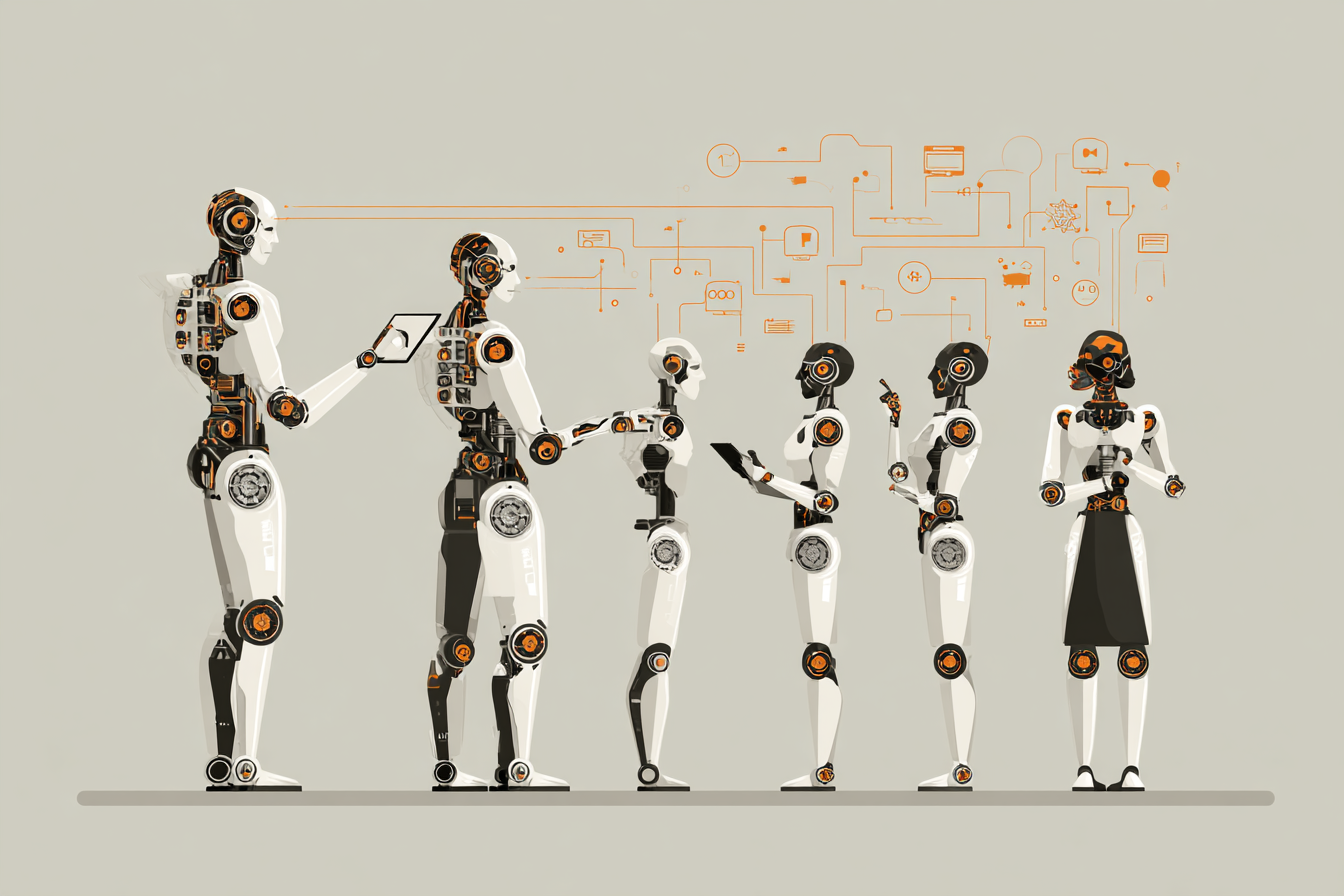"The real world is multimodal. AI finally is too."
Until recently, AI systems lived in narrow lanes. You had models that handled text (like GPT), models that handled images (like DALL·E or Stable Diffusion), and others designed for speech, code, or video. Each model was good at one thing. But the future of AI is not single-sense. It's multimodal, able to see, hear, read, talk, and understand simultaneously, just like humans do.
Welcome to the age of Multimodal AI.
🔍 What Is Multimodal AI?
Multimodal AI refers to models that can process and integrate multiple types of data, text, images, audio, video, and structured information, all at once. Instead of being limited to one format (like language), these models can understand and generate across modalities.
Think about how humans interact with the world:
- We read a menu,
- See pictures of food,
- Listen to someone describe the taste,
- Then speak our order.
A truly intelligent system needs to understand all those inputs together, not in isolation. That's what multimodal AI aims to achieve.
🧠 How Does It Work?
At the core, multimodal AI systems are powered by large-scale neural networks (transformers or diffusion models) that have been trained on combined datasets, text paired with images, video with audio, captions with diagrams, etc.
These models use a shared embedding space where different types of inputs (say, a photo and a description) are translated into a common understanding. This allows the model to reason across formats. For example:
- You upload a picture of a broken coffee machine,
- Ask, "What part is malfunctioning?"
- The AI responds based on both visual clues and mechanical knowledge, combining sight and language.
Some notable architectures behind this:
- CLIP (OpenAI): Matches images with text descriptions.
- Flamingo (DeepMind): Uses few-shot learning across modalities.
- Gemini 1.5 (Google DeepMind): Processes massive multimodal context windows (over 1M tokens).
- GPT-4o (OpenAI): Integrates vision, text, and speech natively and in real time.
🌎 Why Multimodal AI Matters
1. It brings AI closer to real-world reasoning
Single-modality models can't "see" what you're describing. But a multimodal system can:
- Understand a chart and explain it.
- Look at a receipt and extract totals.
- Watch a video and summarize what happened.
This is massive for knowledge work, education, accessibility, and real-time decision making.
2. It makes interfaces more human
Typing isn't the only way we communicate. With multimodal AI:
- You can speak a question,
- Show a photo,
- Point to a chart,
- And ask something complex, all in one flow.
This turns AI from a "chatbot" into a full-fledged assistant.
3. It unlocks accessibility
For people who are blind, deaf, or have learning differences, multimodal AI can:
- Read images out loud,
- Generate captions for video in real time,
- Simplify complex documents visually.
It can be a translator across formats, not just languages.
🧪 Real-World Applications
🏥 Healthcare
- Radiologists can input CT scans and ask the AI for diagnostics.
- Doctors can upload patient notes, labs, and audio logs, all synthesized into a treatment plan.
📚 Education
- Students can take a photo of a math problem and ask for step-by-step help.
- Teachers can turn text into illustrated lessons automatically.
🛍️ E-commerce
- Visual search: Snap a photo of an outfit and find it online.
- Product descriptions auto-generated from images.
📱 Customer Support
Multimodal bots can interpret screenshots, read documents, and understand voice queries, offering real help instead of keyword matches.
🎮 Gaming & XR
Multimodal AI can design 3D worlds from text, control NPCs based on speech, or narrate based on visuals.
📈 The Big Players
All major AI labs are racing toward multimodal dominance:
- OpenAI's GPT-4o (May 2024) brought real-time speech + vision + text.
- Google DeepMind's Gemini 1.5 supports up to 1 million+ tokens of mixed media (PDFs, images, video transcripts).
- Anthropic's Claude 3 can handle text with diagrams and code, though currently image support is limited.
- Meta is releasing open-source multimodal models like ImageBind, which supports six modalities (vision, text, audio, depth, IMU, thermal).
- Amazon is integrating multimodal capabilities into Alexa and AWS Bedrock.
🧩 The Challenges
Multimodal AI is promising, but there are still hurdles:
⚖️ Alignment & Safety
- Interpreting visuals and responding with nuance requires not just intelligence, but judgment.
- Misunderstanding an image or diagram could have serious real-world consequences (e.g., in healthcare or finance).
🧠 Context Management
- How do you process and prioritize multiple types of information at once? (Images + charts + transcripts + questions...)
- Memory and relevance filtering are major technical challenges.
🔒 Privacy
- Many multimodal use cases involve sensitive data, documents, photos, conversations.
- Secure on-device models and encryption are crucial.
🛤️ The Road Ahead
Multimodal AI is not just a feature, it's a paradigm shift.
Just like smartphones changed everything by merging the camera, GPS, and phone into one device, multimodal AI merges how we think, see, talk, and interact. We're heading toward an era where:
- Meetings are auto-summarized from video + transcript + whiteboard sketches.
- Visual data is searchable as easily as text.
- You can "talk" to your spreadsheet and your slide deck.
And maybe most exciting of all, this isn't years away. It's already here, in early form.
🧠 TL;DR: Why You Should Care
Multimodal AI is:
- How AI gets smarter, by integrating senses like humans.
- Already reshaping how we work, learn, and communicate.
- A frontier that will define the next 5 years of AI development.
We're witnessing the birth of AI systems that don't just read, but see, hear, understand, and reason holistically.
And that changes everything.
🗞️ Further Reading
Want more breakdowns like this? Follow me here or subscribe to the newsletter. Next up: AI agents that act on your behalf, not just answer questions.
Joseph Leavitt
Data Scientist, Tech Enthusiast & AI Strategist
